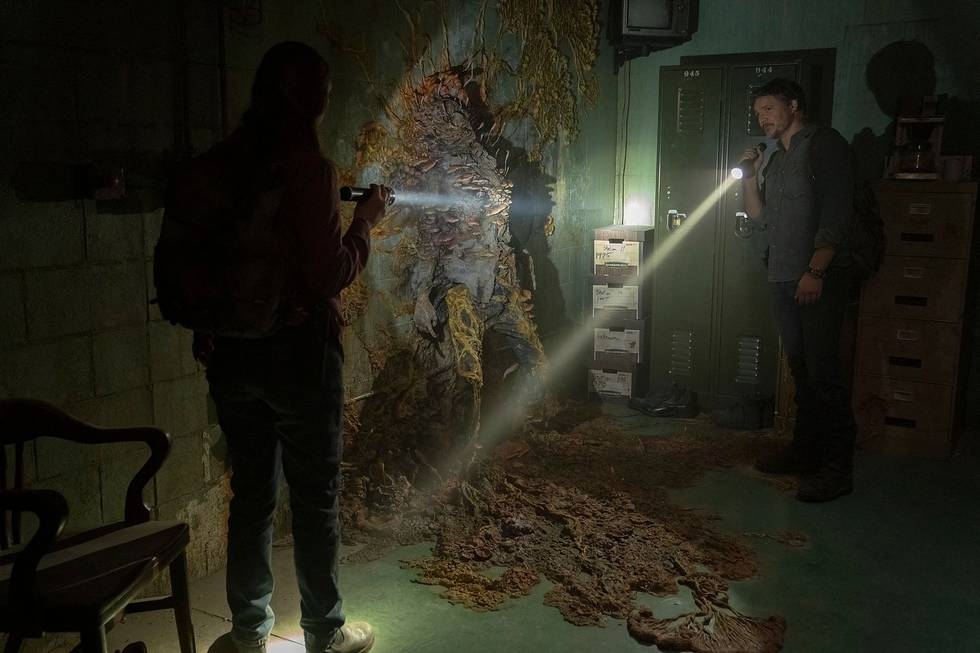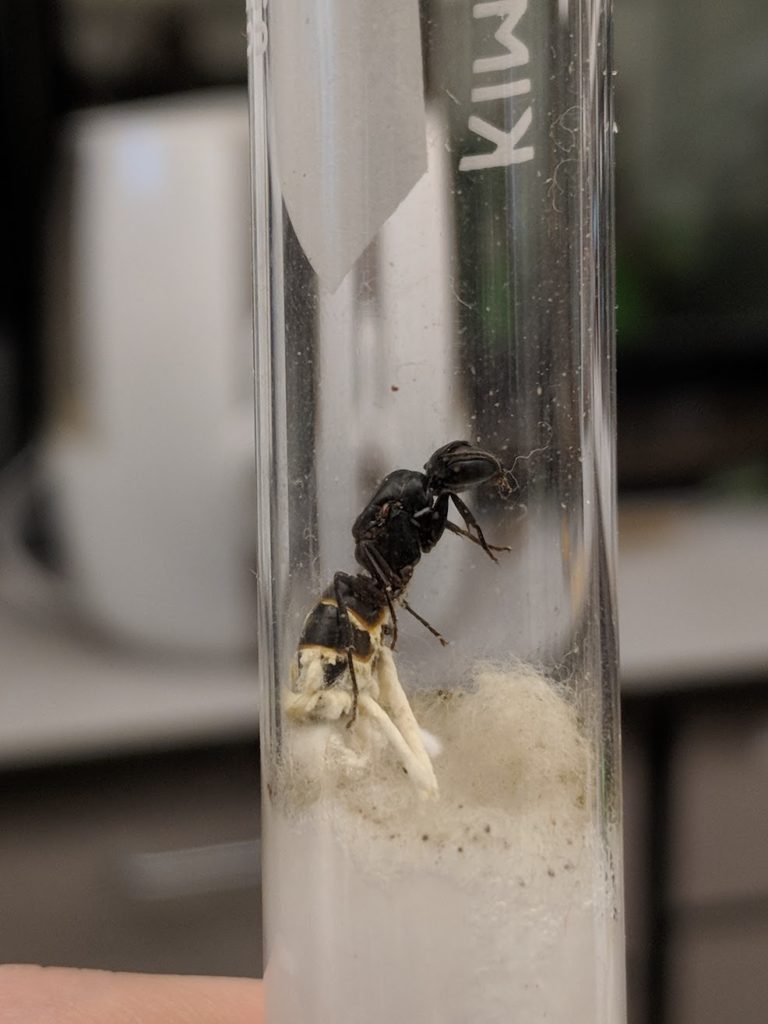
Photograph by Liane Hentscher/HBO
Maia Holmes has been fielding lots of … interesting questions since the HBO premiere of “The Last of Us.”
“This is the most my friends and family have asked about my work in years!” said Holmes, an entomologist and the education and outreach coordinator for Colorado State University’s Department of Agricultural Biology.
For those unfamiliar with the show or the video game that came first, it depicts the aftermath of a pandemic involving a fungus that essentially turns its hosts into zombies that bite other humans in order for the infection to continue to spread.
Holmes played “The Last of Us” game and now avidly watches the show every Sunday with her husband (often with a running commentary). She said even though it involves lots of science (for instance, many of the mushrooms depicted in the show are real species), there’s also plenty of fiction.
First, we need to unpack zombie ants
The fungus in the show is a mutated version of Ophiocordyceps unilateralis – which infects insects like ants and spiders in real life, provoking what many describe as “zombie-esque” behavior.
“The thing about cordyceps is that it’s definitely spooky, but in a very exciting way,” Holmes said. “It does change the behavior of the arthropods that it infects, and makes them act in a way that’s dangerous to their families and their hives.”
Holmes said cordyceps actually eat through the exoskeletons of arthropods in a matter of hours, and once they start to grow inside an insect, they begin to release different chemicals to change its behaviors. For instance, the fungus forces ants to break from their normal behaviors of looking for food to bring back to their hives, and instead makes them climb up nearby plants and perish.
“Once they die, the cordyceps is able to fully fruit – and the infection causes a little mushroom to grow out of the ant’s head and sprinkle spores on the ants underneath it, in hopes they bring the fungus back to the hive where it can spread further,” Holmes said.
As one might imagine, this could spell doom for ant colonies – to the point where the insects have evolved to kill siblings who might be infected with cordyceps and dump their bodies as far away as possible, which is not dissimilar to what occurs in “The Last of Us.”
But unlike the show, Holmes is adamant that cordyceps are not dangerous to humans – and it’s unlikely they ever will be.

An ant at the CSU Bug Zoo shows symptoms of dying from a cordyceps infection. (Photo courtesy Maia Holmes)
Why we shouldn’t worry about cordyceps infecting humans like in “The Last of Us”
In “The Last of Us,” cordyceps evolve to be able to infect humans through contaminated food – and it’s able to wipe out a large portion of the population in a matter of days.
Holmes said it would be very unlikely for this scenario to play out in real life, and it all comes down to anatomy. Humans are a lot more complicated than ants – we have brains and complex nervous systems, and that means we’re infinitely more difficult to control.
Case in point? Unlike vertebrates, arthropods have a comparatively straightforward nervous system that is made up of strands of nerves called ganglia. These can do basic behaviors, but their nervous system is so simple that it’s possible to buy little kits that let you “hack” a cockroach’s system and drive them.
“As far as I know, something like that does not exist for any vertebrate,” Holmes said. “And that’s why it would be extremely complicated for cordyceps to control a person.”
Then, there’s the fact that humans have a comparatively high body temperature. Holmes said research has noted that most fungi won’t thrive in temperatures higher than 94 degrees Fahrenheit (a terrified mycologist on the show notes this fact too, only to realize, with dawning horror, that the species has somehow mutated anyway).
“A lot of hypotheses say the reason humans are the temperature we are is in part to make us difficult for fungi to live in,” Holmes said.
With that being said, climate change is giving fungi a reason to adapt to higher temperatures. But, still: Don’t panic. Holmes said the fact of the matter is that the human brain is incredibly complicated for any organism to decipher, let alone hijack. Also, adaptations like this would take millions of years to play out, so it’s not something we’re likely to see in our lifetimes.
And then, there’s the matter of how cordyceps spread. In “The Last of Us,” the infected bite other humans. Holmes said this simply isn’t an effective method of transmission for any disease.
“We’ve almost eradicated rabies simply because the one-to-one interaction involved with biting doesn’t allow anything to spread particularly quickly,” Holmes said, adding a vigorous vaccine campaign also contributed to this success.
Cordyceps and fungi in general are actually a very good thing
With all the talk of “The Last of Us” and zombie ants, Holmes’ hope is that people realize how much good fungi like cordyceps can do. For instance, it can be used in lieu of harmful pesticides to target insects that could harm crops.
“Cordyceps can be used to kill grasshoppers but not honeybees, which makes it a much safer alternative than chemicals, which target everything,” Holmes said. “I just really hope the popularity of ‘The Last of Us’ doesn’t turn people off from using cordyceps in agriculture, because it really is a good thing.”
People have been able to buy cordyceps in garden and hardware stores for decades, and the fungus is also being used in human supplements sold in health foods stores.
Holmes said she’s hopeful the talk of cordyceps sparks a conversation about the amazing world of fungi in general.
“Fungi are being used to clean up superfund sites, to absorb and break down toxic metals, and are also a great source of food,” Holmes said. “Fungi are an untapped resource on our planet, and they’re so neat. I think this discussion is a great invitation to tell people how amazing life is on Planet Earth and to spark their curiosity.”